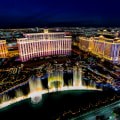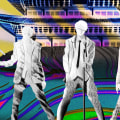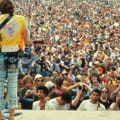The most common forms of popular culture are movies, music, television, video games, sports, entertainment, news, fashion, and various forms of technology. Some of us may be very selective in our consumption of popular culture, but it's hard to find someone who hasn't felt influenced by popular culture at all. Examples of pop culture can be found in language, art, cinema and, in particular, music. This can include 40 pop music, young adult fiction such as Harry Potter, and fleeting pop culture trends, such as flash mobs and clothing styles.
The opposite is the alternative culture or subculture, which is a culture practiced by groups of people but that has not reached the masses. Occasionally, elements of the subculture break through and briefly become popular culture, such as the rise of pop punk bands in the late 1990s and early 2000s. Boy bands have achieved popularity in waves. An earlier wave of boy bands in the 1960s and 70s saw bands like The Monkeys and The Beach Boys rise in popularity.
A central feature of boy bands is that they are given a fun pop image designed to attract a wide audience. They often have choreographed dance movements and are mainly vocalists. They are usually young teens or boys in their 20s who sing love songs to girls. Rock music rose to prominence in the 1960s and 1970s and has enjoyed significant popular success intermittently ever since.
Similar British rock bands such as The Rolling Stones, The Kinks and The Who also achieved worldwide fame in the mid-1960s, and before long this group of artists received the nickname “bands of the British invasion” in the United States. Every few years, a children's collector's item bursts into the popular spirit of the time. A popular example throughout history are the Pogs, which began as collectible milk tapas in the 1920s. In the 1990s, they were distributed in McDonald's happy meals.
Dance styles gain popularity in various cultures at different times. In the United States, in the 1950s, the swing dance style was very popular. In the 1990s, with the popularity of grunge music, mosh-pits became popular. This was followed by the rise of rave culture and electronic dance music, which also involved a somewhat unstructured leap to music.
Flash mobs became a very popular part of Western culture in 2003 and remained prominent for about 3 years. The spread of punk peaked with the appearance of megabands of pop punk in the 1990s. The epitome of this was the band Green Day. Many older punks used the phrase “pop punk” as a term to mock punk music, which had “sold” to corporate interests in order to enjoy popular fame.
The heyday of sitcoms was in the 1990s. During this era, comedies (“sitcoms”) appeared on television every night and united a nation. The music of the top 40 is one of the most prominent ways in which pop culture can be identified. Each year's top 40 charts are commemorated online to help people reflect on what music captured the spirit of the year.
Often, music that is in the top 40 is called “charts” to show that this music is the music of the masses. A very popular video game series from the 1980s and 1990s was the Mario series. To this day, people dress up as characters from video games such as Mario, Toad and Princess for cosplay events. Some argue that highly attractive items dominate popular culture because for-profit companies that produce and sell popular culture items try to maximize their profits by focusing on items that are broadly attractive (see cultural industry).
Some video games have reached the level of popular culture, to the point where they have presented derivative products such as movies and action figures. It creates currents and whirls, in the sense that a small group of people will have a strong interest in an area of which mainstream popular culture has only partial knowledge; thus, for example, the electro-pop group Kraftwerk has had an impact on mainstream popular culture to the extent that they have been referred to in The Simpsons and Father Ted. Many people say that popular culture is a tool used by the highest-ranking people in a society and elites (who often control the media and popular culture media) use to control people who are below them in society. While punk music began as a counterculture designed to resist corporate capitalism's takeover of pop music, it wasn't long before punk became widespread.
Older generations tend to view pop culture with fear, seeing it as a threat to traditional culture. The challenges that became big enough even involved the participation of prime ministers and politicians hoping to harness the popular spirit of the time. Pop culture finds its expression in the mass circulation of items from areas such as fashion, music, sports and cinema. Some say that popular culture tends to support a limited understanding and experience of life through common and unsophisticated feelings and attitudes and its emphasis on the banal, the superficial, the whimsical and the disposable.
Critics can also affirm that popular culture comes more from sensationalism and narcissistic fantasies of wish fulfillment than from a considered sober reality and from mature personal and spiritual development. The genre has also burst into popular culture in the West, especially after the rise of the hit song Gangnam Style. In general, pop culture is more appealing to the masses, while subcultures and countercultures may be more controversial and rebellious. Popular culture also encompasses the activities and feelings produced as a result of interaction with these dominant objects.
Famous reality television programs that have entered the popular spirit of the time include Survivor, Big Brother and American Idol. Many young adult fiction books make their way into the popular imagination and become a big part of popular culture. . .


